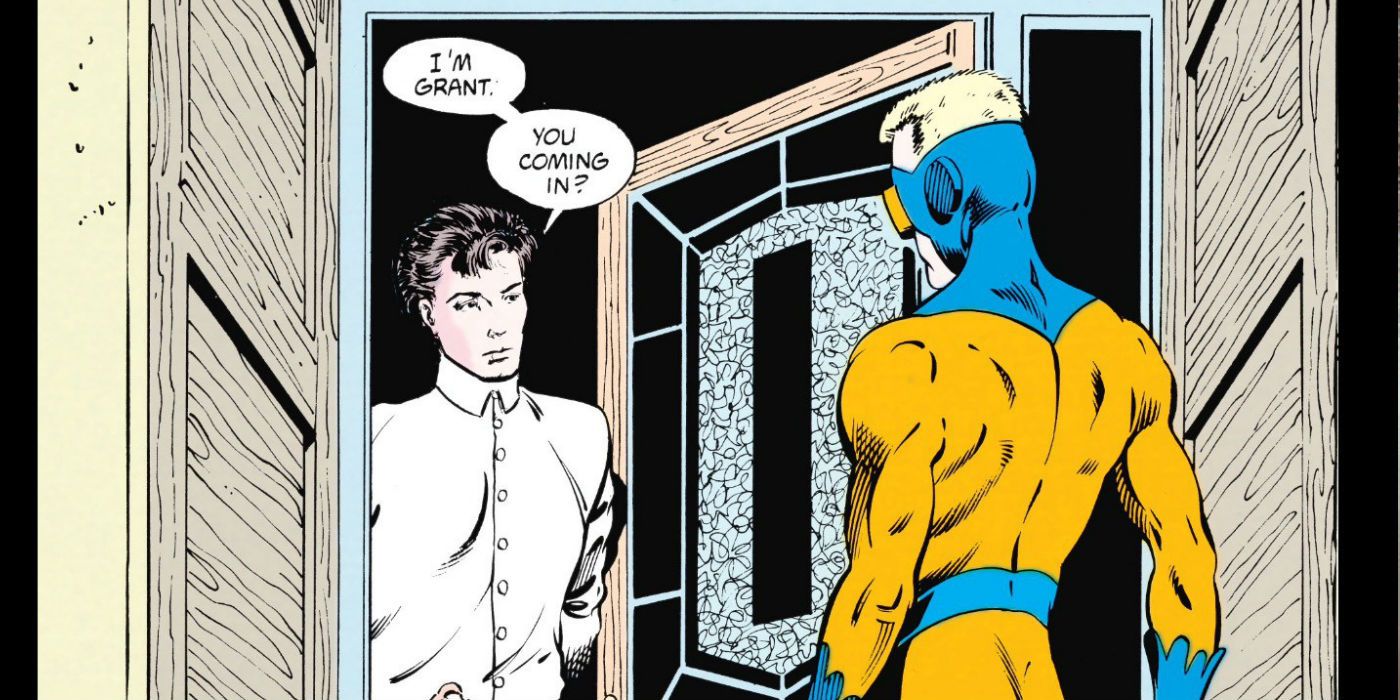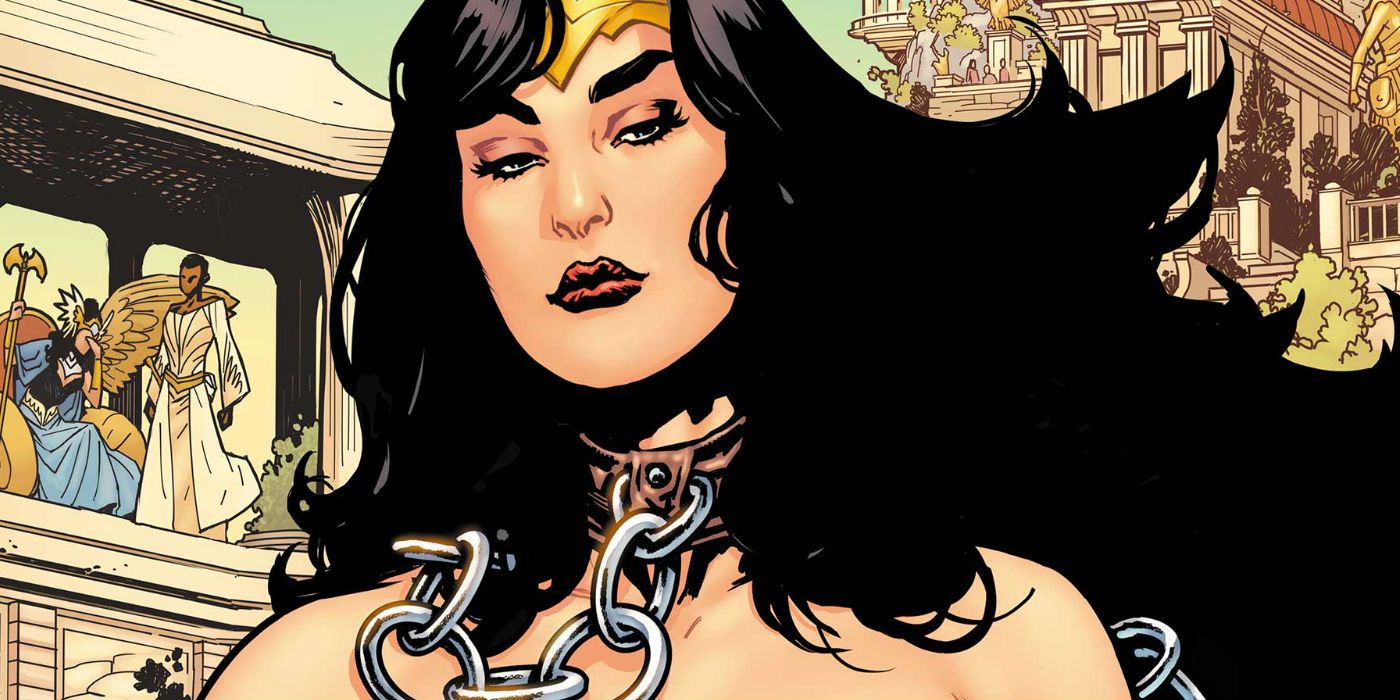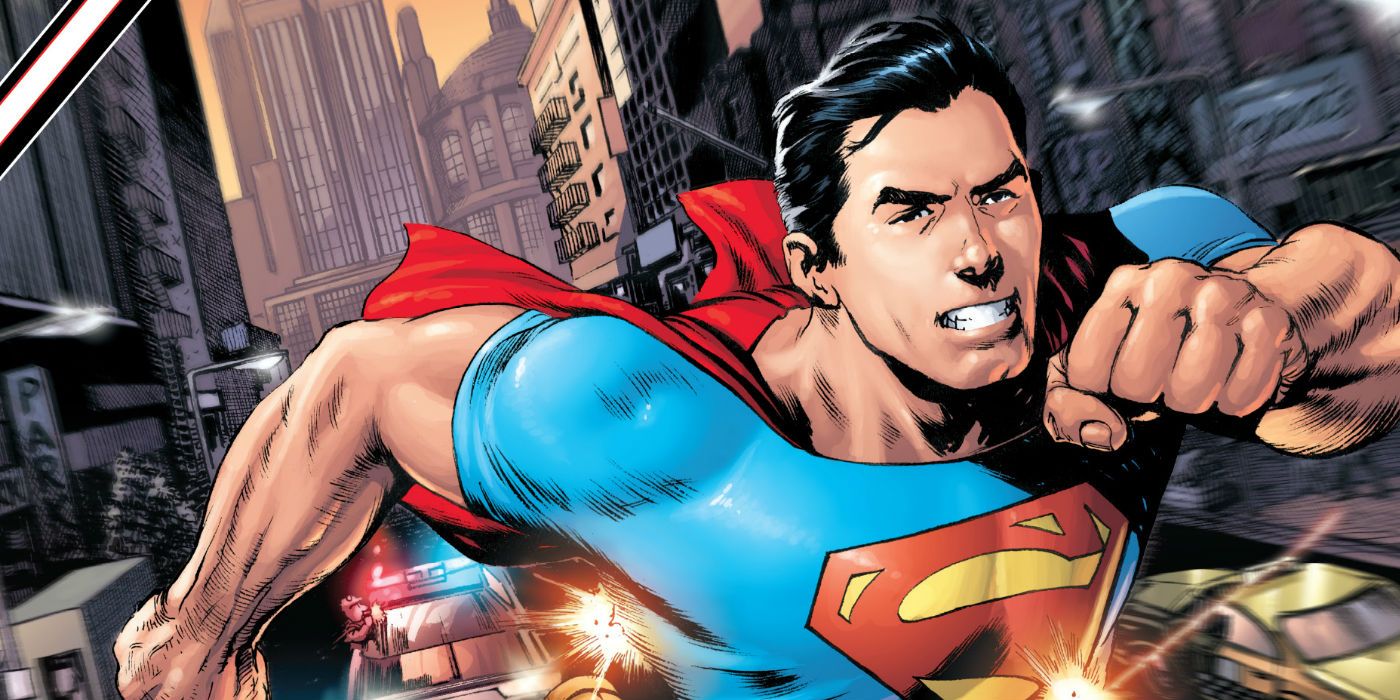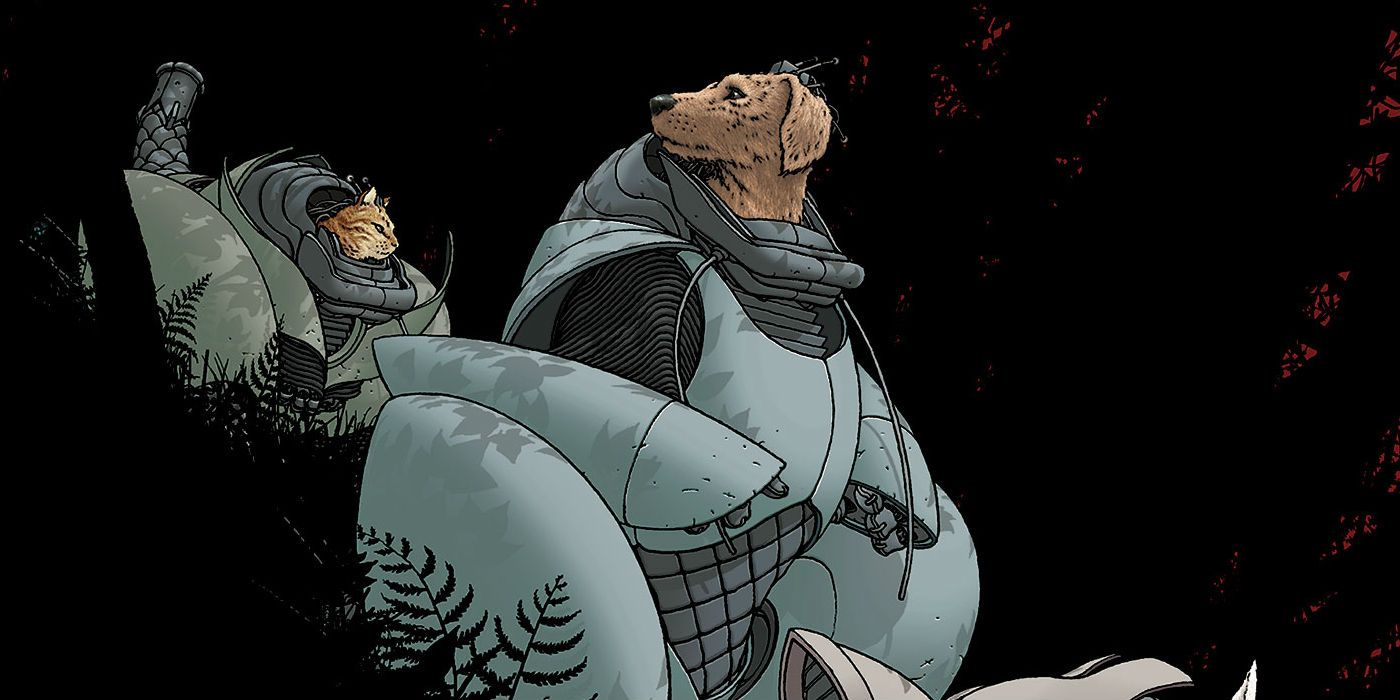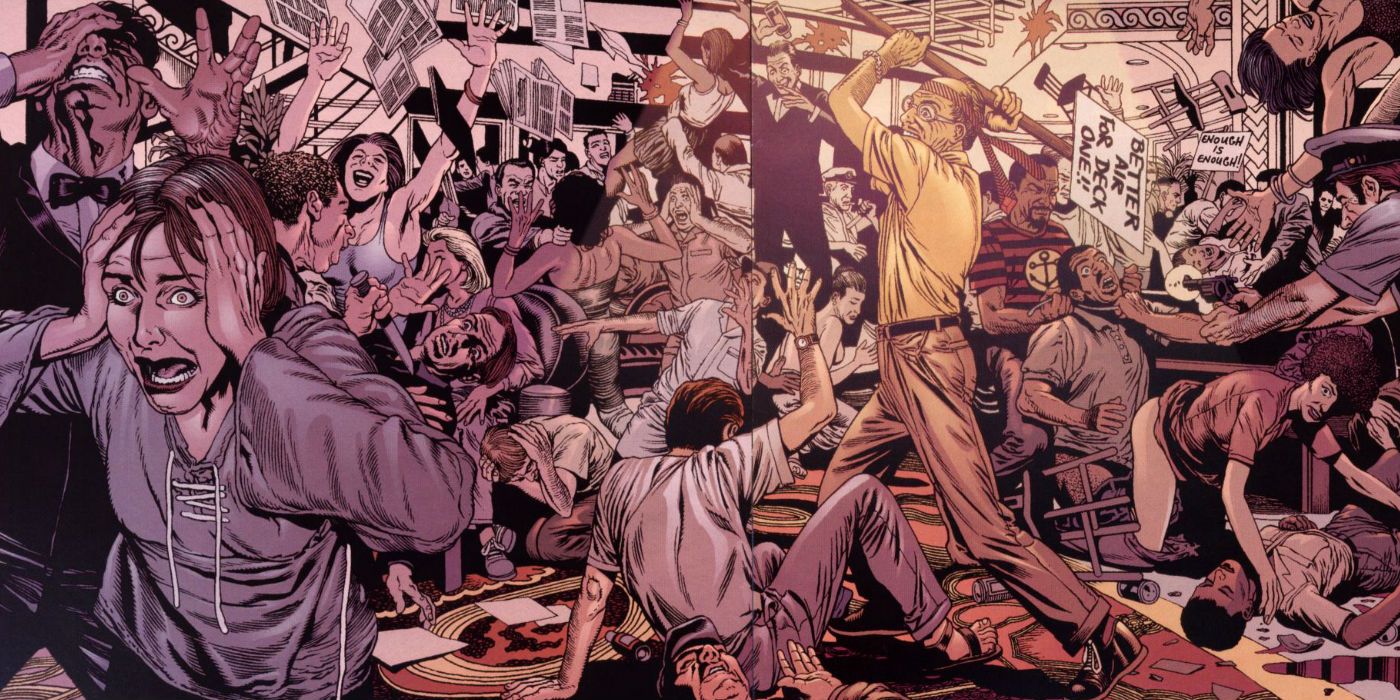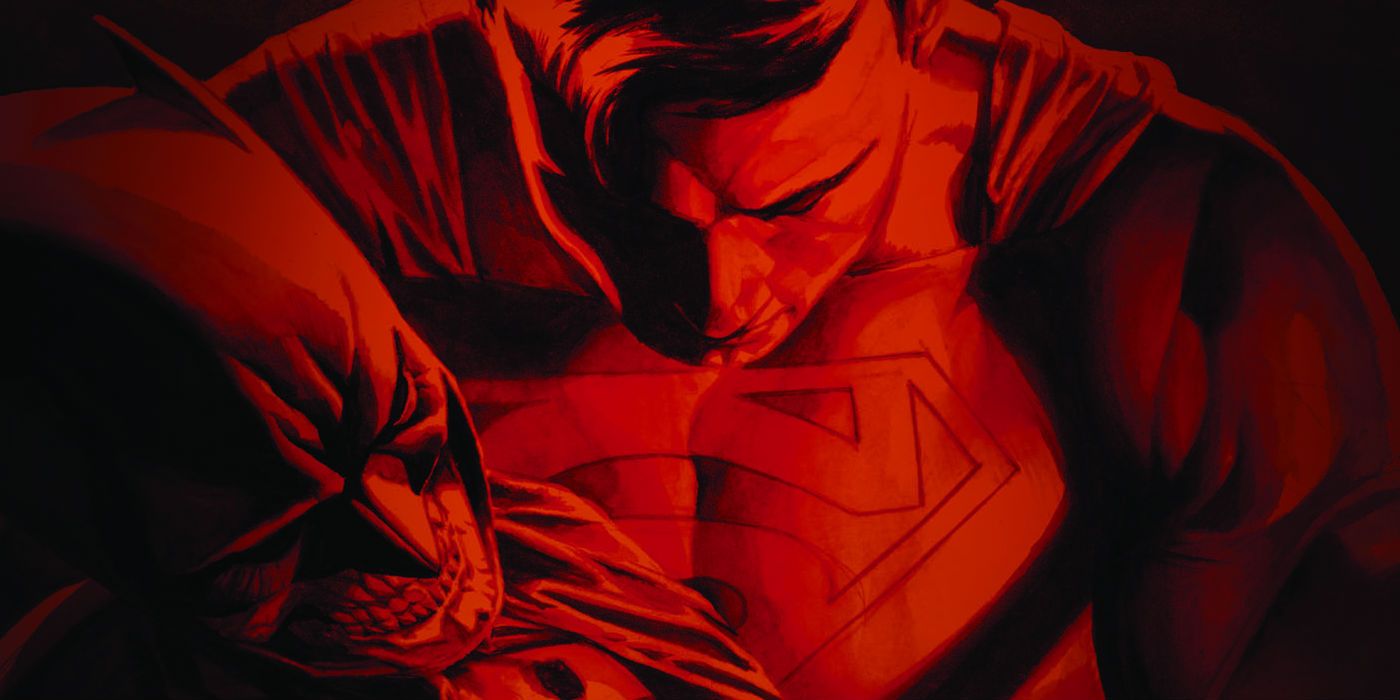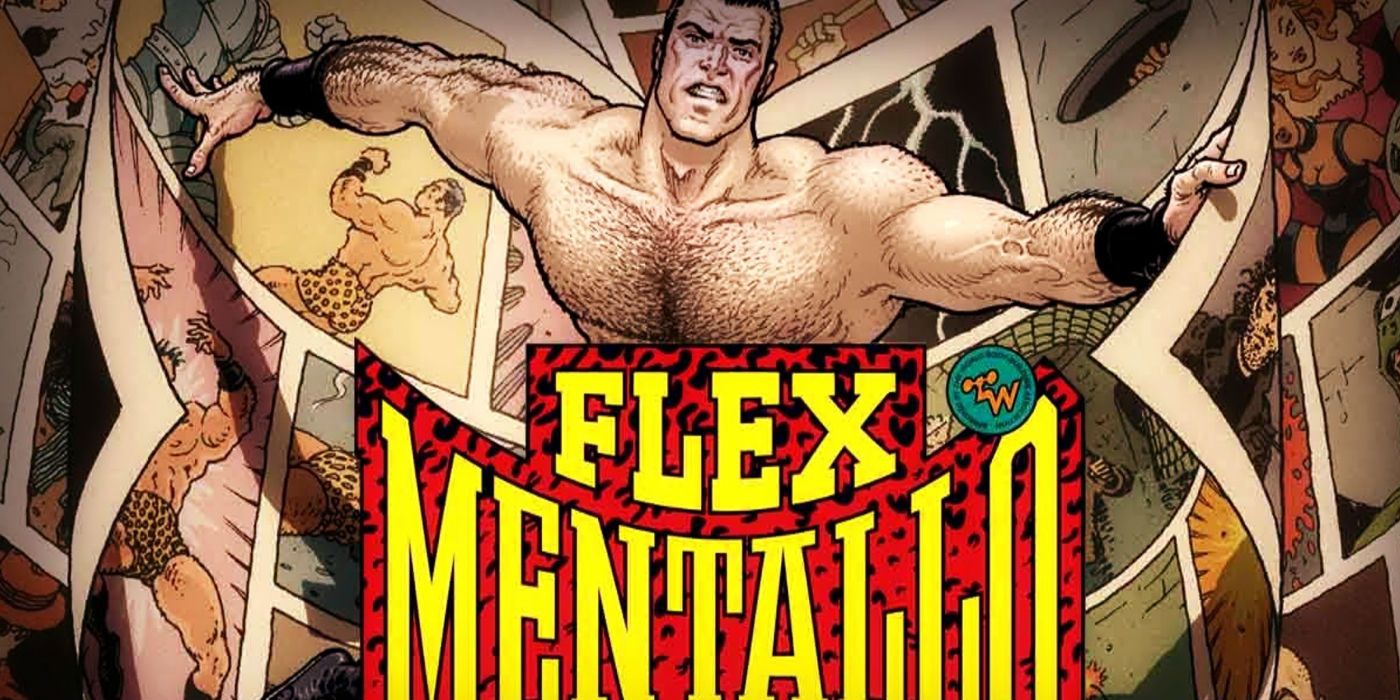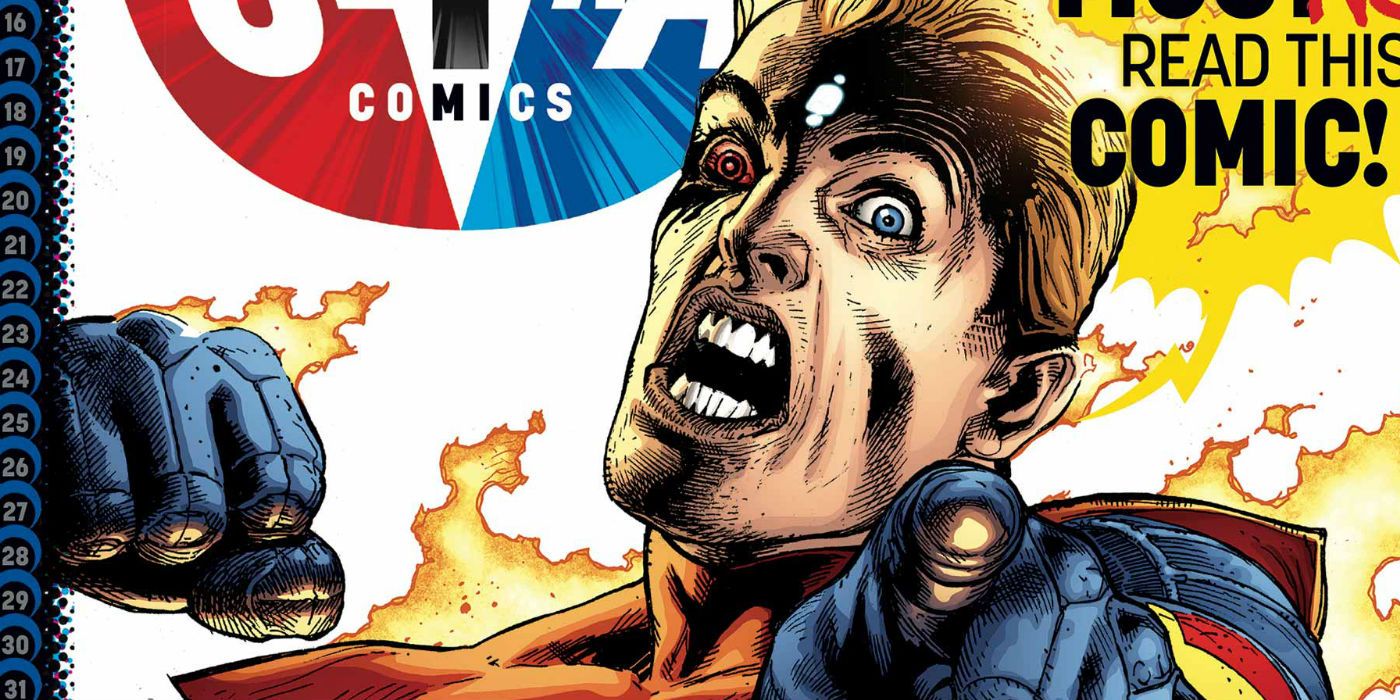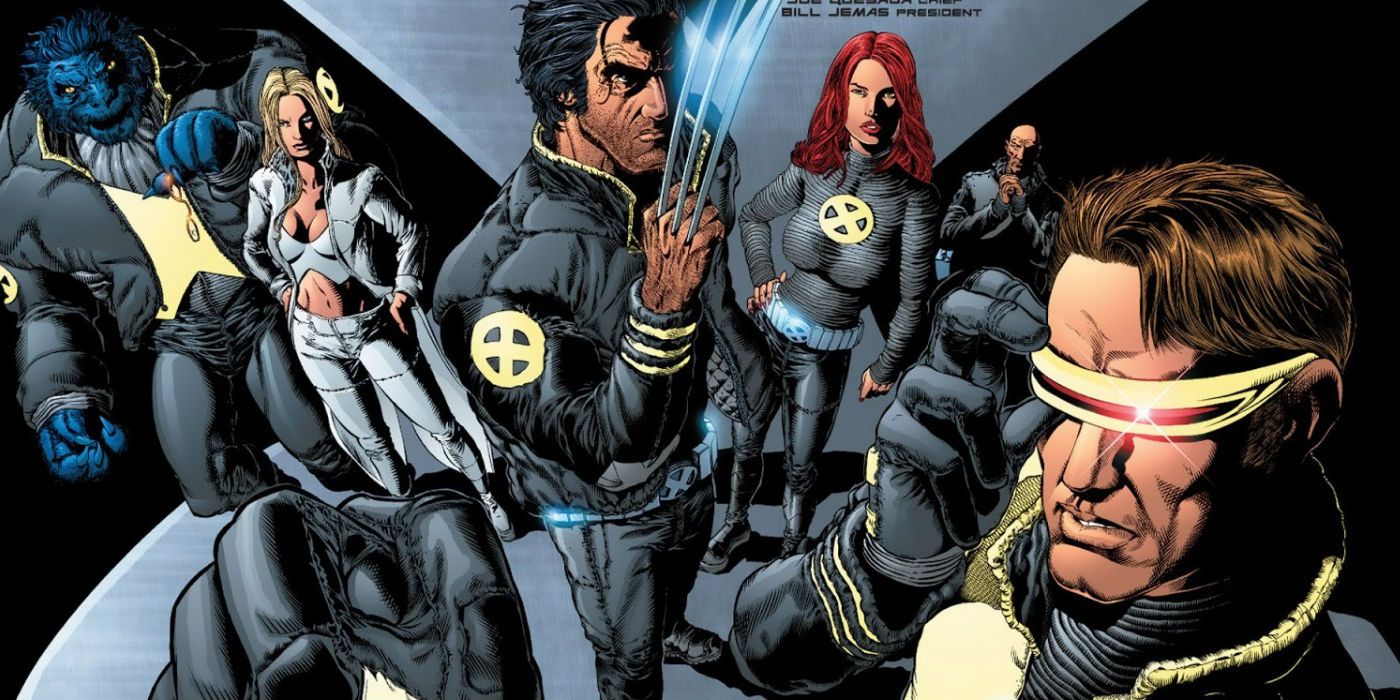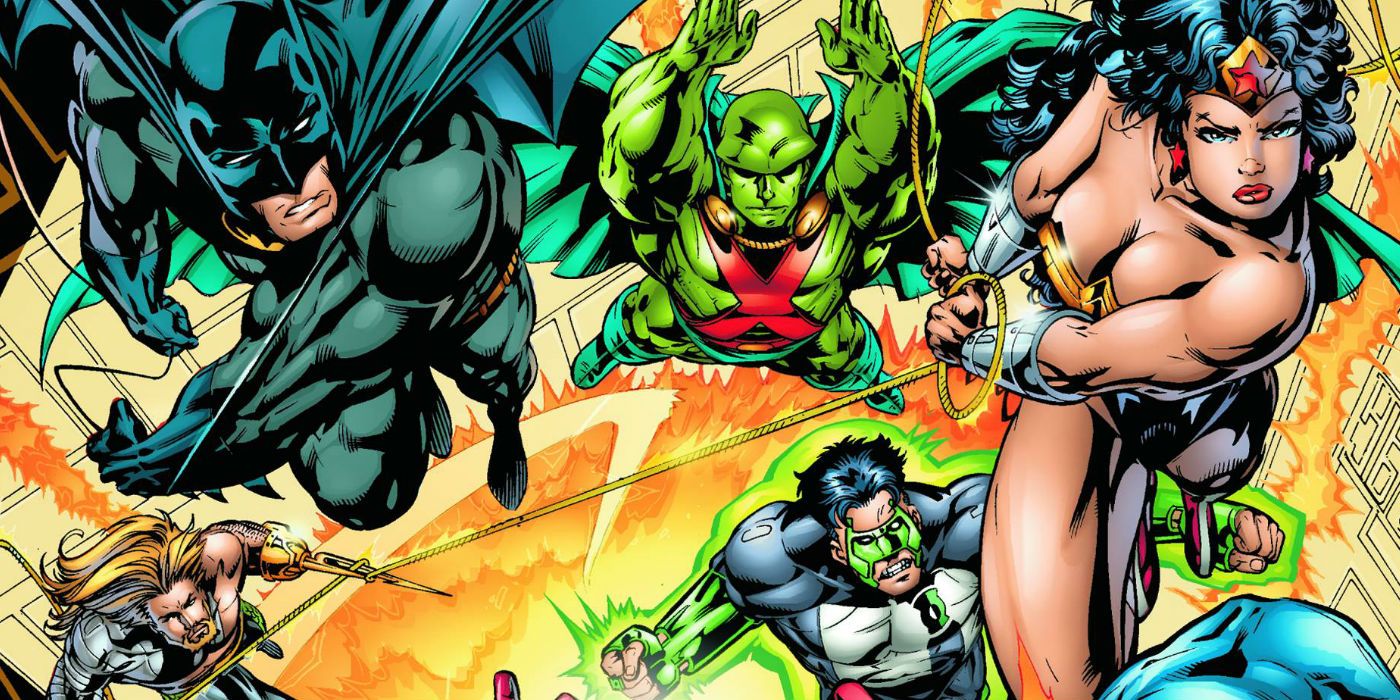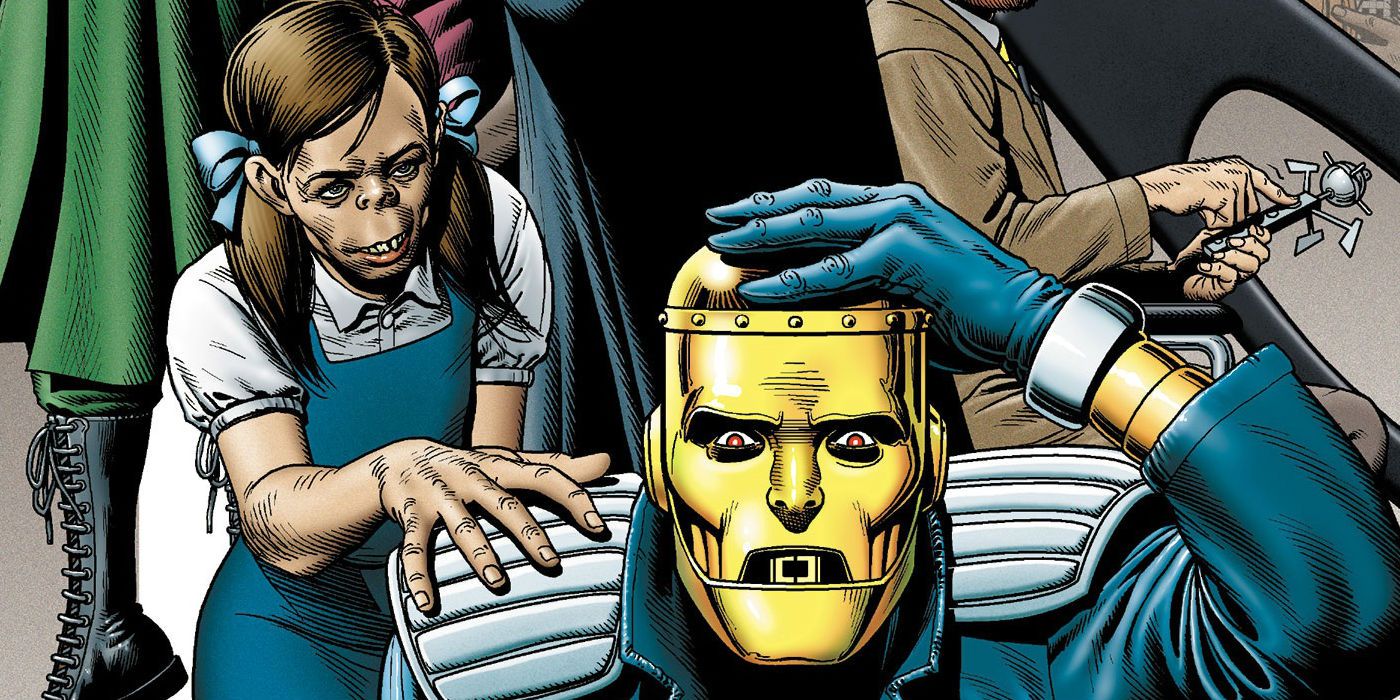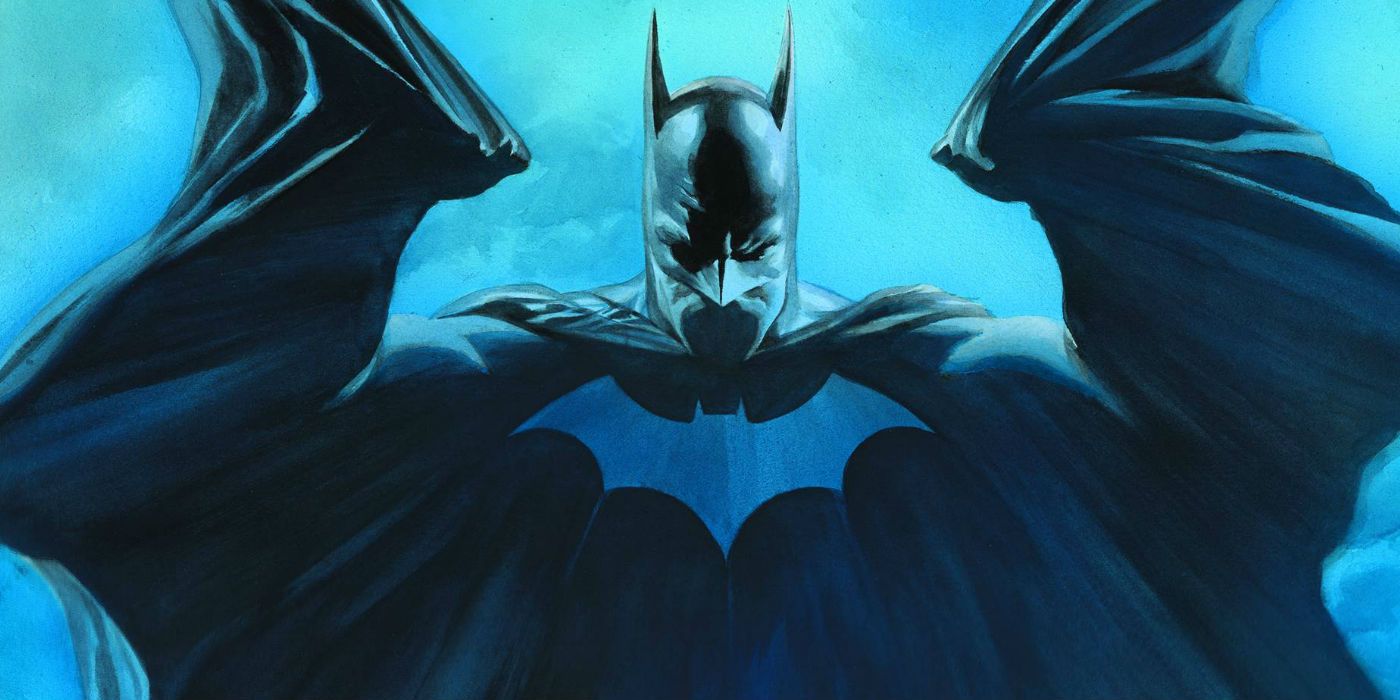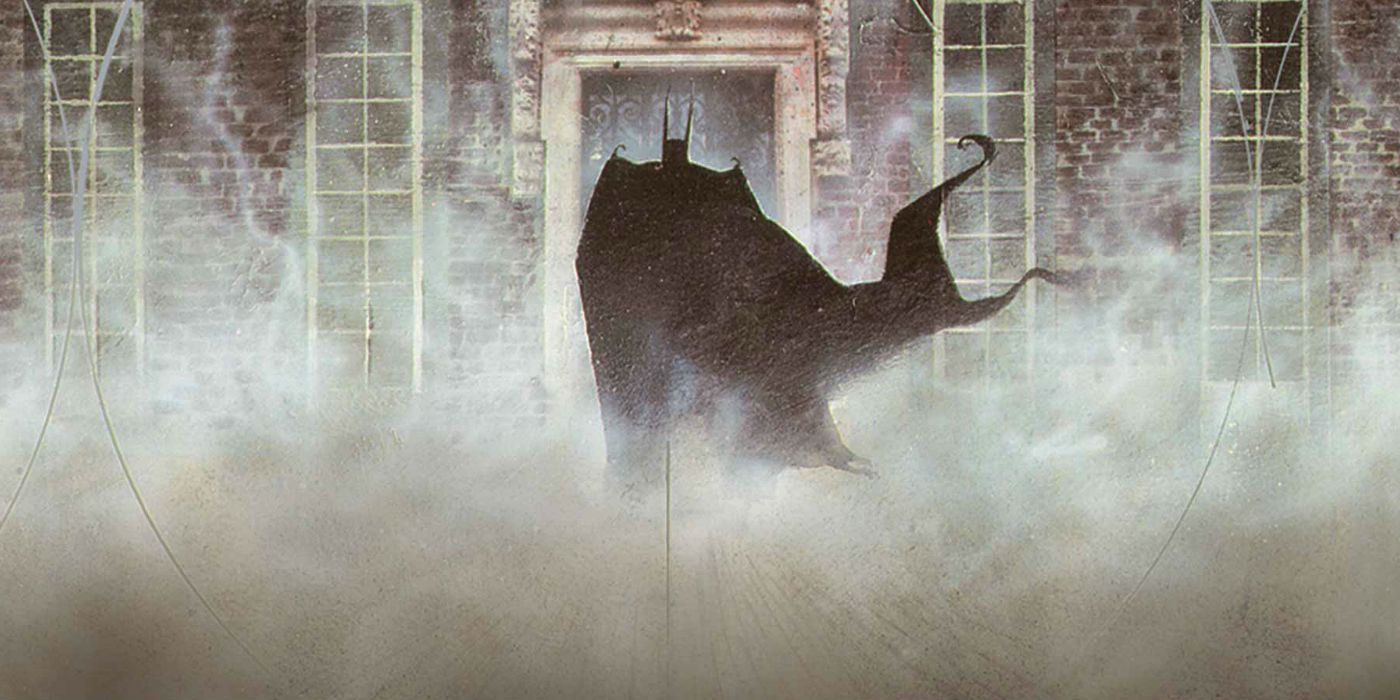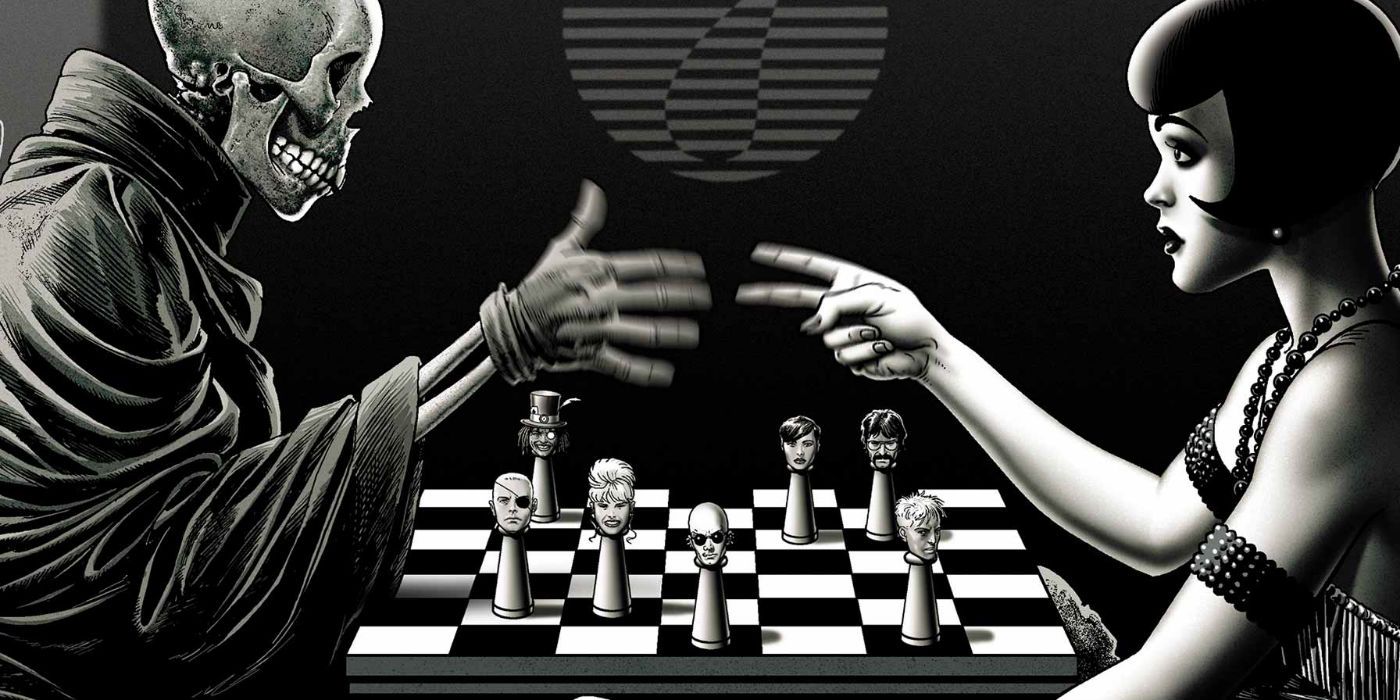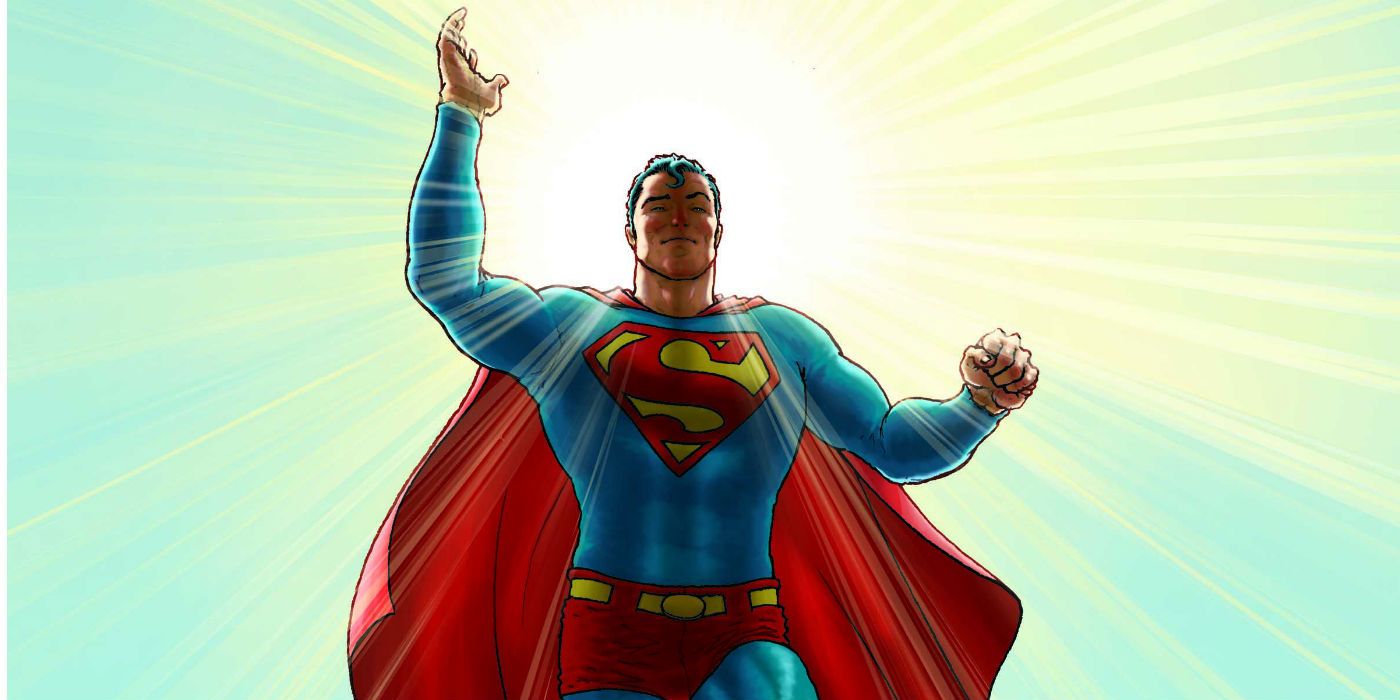When we think of the most significant creative talent in the comic book industry, a slew of names comes to mind: Frank Miller, Adam Moore, Jack Kirby, Neal Adams, Denny O'Neal, Neil Gaiman, the names go on. However, arguably the biggest and most influential name that comes to mind is Grant Morrison.
RELATED: Batman: The Best Moments From The Snyder And Capullo Run
One of the most important creative writers to ever work on any title in comics, Morrison has had numerous groundbreaking runs on several big titles (including "Superman," "Batman," "Wonder Woman," the "X-Men" and "JLA") and also many indie and lesser known books. In this list, we will explore Grant Morrison's 15 greatest books that he has ever written and see which of his many classics ranked in at number one.
15 WONDER WOMAN: EARTH ONE
Released in 2016, "Wonder Woman: Earth One" is Morrison's most recent title on this list and is the story that Morrison had been wanting to tell about Wonder Woman for some time. Working with talented French-Canadian artist Yanick Paquette, this book is one of the best Wonder Woman books ever published and is one of several books released under the "Earth One" series along with Teen Titans, Batman, and Superman.
While on "Fatman on Batman," Morrison explained to Kevin Smith the motivation for his story, detailing that it always feels like Wonder Woman as a character seems to always be on trial. He mentions that people ask questions as to why she "doesn't work" and needs different creatives to re-imagine her. His primary motivation was to take her back to her kink-laden roots of when she was being published by William Moulton Marston, the inventor of the lie detector. The product is a very well-polished book with creative panel distribution, a unique narrative, and an inspired Wonder Woman story. Morrison and Paquette are working on a second volume of the title, which will hopefully continue upon the quality of the first volume.
14 ACTION COMICS
Grant Morrison and Rags Morales "Action Comics" run comes in at #14 which ran from 2011 at the start of the New 52 through 2013. The 18-issue series focuses on the new origin story of the new Superman, while having a unique Grant Morrison take on things. Morrison took Superman to his Golden Age roots as well making him a socialist avenger who preyed upon corrupt social figures while wearing a t-shirt, jeans, and farmer's boots. The story features him taking on Brainiac and Vyndktvx as he slowly evolves into the Man of Steel.
In the 2000's, Superman had several origin stories published such as "Birthright" and "Superman: Secret Origin" which were both very good origin stories. So to have to compete against such quality origin stories while still having a bold, innovative take is a rather arduous and daunting task. Fortunately, its Grant Morrison and his 18-issue run on "Action Comics" was both bold and innovative. He created a new villain from the fifth dimension where Mr. Mxyzptlk is from and had an extremely unique narrative structure through the run. The only problem is that his run stopped at 18 issues.
13 WE3
"We3" is a 2004 collaboration between Morrison and Frank Quitely for the Vertigo imprint. For the longest time, it seemed as if the book would be adapted into a featured film, going so far as to having Morrison write a screenplay for the property. However, it never came to pass. The book is an emotional look at three prototype animal weapons created by the government. The group consists of a dog named Bandit, a cat named Tinker and a rabbit named Pirate who were all kidnapped and scientifically altered to become weapons. The animals express their pain through their newly realized ability to communicate.
Morrison and Quitely have described their approach to "We3" as a "Western Manga" with wildly dramatic angles and nonstop action. "We3" is unlike other Morrison titles in that it is extremely minimalist and compact at just three issues. The book is very accessible as its narrative is easy to follow, the plot is sympathetic and gripping and the art is incredible as is always the case with Quitely's work. This is a very creative and imaginative story that everyone should read, and with its accessibility, there's no reason not to.
12 THE FILTH
"The Filth" is a 13-issue series by Morrison along with Chris Weston and Gary Erskine. Published by Vertigo from 2002 through 2003, it is the final part of what Morrison refers to as a Hypersigil trilogy. Originally starting as a proposal for a Nick Fury book, the comic is about a bachelor named Greg Freely whose main interests include his cat and masturbating to pornography. But covertly, he is part of a secret society called The Hand whose mission statement is to keep society on the path to "Status Q."
Morrison describes "The Filth" as a companion piece to "The Invisibles" and it certainly plays upon similar themes and concepts such as fractal realities, postmodern blurring of the fourth wall, art reflecting life and the world as a living and breathing organism. Like "Flex Mentallo" and "The Invisibles," "The Filth" is about creating a super-powered chaos sigil that seeks to create more positivity into the larger cultural collective, which Morrison had viewed as being very negative.
11 FINAL CRISIS
"Final Crisis" was a massive event published by DC Comics between 2008 and 2009. The nine-issue event was written by Grant Morrison with art done by JG Jones and Marco Rudy. The book is essentially a culmination of the Hypercrisis concept that Grant Morrison came up with, the "Forth World" series, draws from "Seven Soldiers" (a story that unfortunately just missed making it onto this list), and is basically about the day evil wins. That is a muddled way of putting it, but it is a convoluted series that is very polarizing with readers and is very continuity heavy.
The book is one of the most impressive things ever published, it's just not very accessible to new readers. However, the book explores so many themes and elements of the comic book industry so daftly. It explores the very conventions of what Superman is on an abstract. As Morrison puts it, his real superpower is that he always wins and that's part of what the story is about. Another element that he explores is that he subtly characterizes editors as being vampires, sucking the life from his stories, all while drawing and heavily referencing a ton of other books in the DC bibliography. The book is not for everyone, and its certainly not your usual comic book event, but it is a masterpiece.
10 FLEX MENTALLO
Flex Mentallo first debuted in "Doom Patrol" #35 in 1991 as a satire of Charles Atlas advertisements. However, he received his own miniseries under Morrison and Quitely in 1996. The miniseries follows Flex Mentallo who can warp reality by flexing his muscles. It is a part of Morrison's Hypersigil trilogy with "The Filth" and "The Invisibles." The miniseries is perhaps Morrison's most under-appreciated book, but that does not take away from the quality of the book.
Flex Mentallo is basically very meta, spinning a character from comic book ads into a comic book protagonist and investigating the effect that has on a reader. Throughout the miniseries, Flex is looking for an old friend and a group of terrorists called Faculty X. The narrative shifts so that sometimes Flex only exists in scribbles of Wally Sage; and in others Sage is an angsty rock star, or an angry kid, or an alien abductee, or a 1960s Greenwich Village scenester, or even Flex himself. The reality of every page alters, where it sometimes takes place in quantum subspace or a nuclear flash-fire or a fishbowl. It questions the conventions of reality, sort of like "Animal Man," but in a much more erratic way.
9 MULTIVERSITY
"Multiversity" is a nine-issue series that was published between 2014 and 2015. Written by Morrison, the series features a myriad of different artists for each issue, such as Ivan Reis, Frank Quitely, Cameron Stewart, Chris Sprouse, Karl Story, Ben Oliver and Doug Mahnke. Every issue of the book essentially explores a different Earth within the DC multiverse with each issue being subtly tied together.
This was an extremely bold endeavor to tackle, as Morrison sought to really flesh out the extent of the DC multiverse in this series. Examples of worlds explored in "Multiversity" is the Charlton Comics world that features the same characters who inspired "Watchmen," including Captain Atom and the Question; a Thunderworld story with the Marvel Family that sought to utilize them in a way that would be, as Morrison described it, "like a Pixar movie;" and the world of Overman, which is one that's run by Nazis due to Overman (that world's Superman) essentially being raised by Hitler. The book, like "Final Crisis," is bold and pays a great homage to DC Comics. Unlike "Final Crisis" however, it is very accessible and worth checking out even for readers who don't know much about DC Comics.
8 NEW X-MEN
Published from 2001-2004, "New X-Men" was written by Morrison with illustrations by longtime collaborator, Frank Quitely. In addition to working with Quitely, Leinil Francis Yu, Igor Kordey, Ethan Van Sciver, Phil Jimenez, Chris Bachalo and Marc Silvestri all provided art for the title as well. In one of the most heralded and critically acclaimed "X-Men" titles ever published, "New X-Men" is the only Marvel title on this list that Morrison published.
The book was a very important breath of fresh air in an otherwise stale title. After decades of work, Claremont had long since left the title, and with the financial success of the first "X-Men" film, Joe Quesada tapped on Morrison's shoulder to carry the brunt of creating a meaningful title. Morrison had a myriad of new and creative ideas, such as giving Beast a second mutation, introducing Emma Frost to the team and creating a nasty love triangle between her, Cyclops and Jean Grey. He expanded the school to feel and resemble an actual school and destroyed a mutant safe haven. Morrison had a bad falling out with Marvel toward the end of his run, which ultimately impacted his departure and the series' conclusion, but it does not ultimately take away from the books' seminal nature.
7 JLA
"JLA" was Grant Morrison's approach on the Justice League of America, and his run with Howard Porter ran from 1997-2000, before being taken over by other creative talent. DC had tremendous success with "Justice League International" in the late '80s, but after that book lost its steam and reached its natural conclusion, DC released several spinoff books that sold poorly. Since the "Crisis on Infinite Earths" event, the big seven had not been unified on one team, so Morrison tasked DC to let him bring all seven back together to create perhaps the greatest JLA run ever.
The book was a "back-to-basics" approach that saw "JLA" become DC's best selling title. Morrison sought to make the Justice League larger-than-life mythic figures, as if they were like a pantheon of modern gods. A lot of ideas introduced here would be utilized in later DC publications such as a Watchtower in space, utilizing legacy characters and the introduction of the White Martians. With "Doom Patrol," Morrison wanted them to face the strangest threats, but with "JLA," they only faced the most earth-shattering threats such as a malfunctioning war machine from the future or a horde or renegade angels. Morrison and Porter's run with the team is perhaps the greatest run ever on the League.
6 DOOM PATROL
In 1989, Grant Morrison and Richard Case took over the "Doom Patrol" title at issue #19. Morrison is very good at taking a concept, reducing it into its abstract, and making a statement. In his "Fatman on Batman" interview, Morrison explained that Justice League exists to take on the universe's greatest challenges, but the Doom Patrol exist to take on the world's most bizarre and unusual. To create the book, Morrison was heavily influenced by Dada and surrealist art, literature and film to help synthesize such an unusual work of art.
The book featured a range of weirdos and misfits married together to face threats like the scissor-men who cut the very fabrics of time from the page. The team featured characters like Crazy Jane who had 64 distinct personalities, Negative Man who became Rebis - a hermaphroditic individual who struggles with both normalized genders, Dorothy Spinner who can make imaginary friends comes to life and Robot Man who struggles to feel anything at all. Morrison and Case induced comics with "high art" ideas like merging heroes with Borgesian post-modernism and drilled home the central tenant of Dada: the idea that not everything has to be understood.
5 BATMAN
Colloquially referred to as Morrison's "Batman" epic, Morrison's ongoing work on "Batman" started in 2006 and ran through 2013, and collects seminal story arcs like "Batman and Son," "The Black Glove," "Batman R.I.P.," "Batman and Robin," "The Return of Bruce Wayne" and "Batman Inc." A character like Batman is incredibly difficult to leave a lasting impression on. Perhaps no other character in comic book history has had a more critically acclaimed titled than Batman. Whether its title is being handled by Denny O'Neil and Neal Adams, Frank Miller or Steve Englehart, it is very difficult to make a dent on the property. However, Morrison perhaps created the most significant run in the company's crown jewel's history. That being said, it is remarkable DC hasn't released an omnibus or two for all of this yet.
Grant Morrison's Bat-Epic breaks down the 70-something-year history of Batman and basically tries to make it all fit into continuity. His days as a solo vigilante of the '30s, adopting Robin and being a big brother figure, to things getting weird in the '50s and '60s with the pulp aspect of "Batman" stories, Batman becoming a James Bond-like figure in the '70s, to everything going wrong with Jason Todd and "No Man's Land" in the '80s and '90s. Morrison makes all of this part of Batman's history, and its absolutely incredible. An absolute-must read for any Batman fan.
4 BATMAN: ARKHAM ASYLUM - SERIOUS HOUSE ON SERIOUS EARTH
Published in 1989, "Batman: Arkham Asylum - Serious House on Serious Earth" was Grant Morrison's foray into mainstream comics. Teaming up with surrealist artist, Dave McKean, the book was a smash critical and financial success, helping to finance Grant Morrison's global travels that would inspire "The Invisibles." Riding the success of "The Batman" film that came out the same year, the film helped make the book incredibly lucrative. Morrison says that he still receives very handsome royalty checks for the book to this day.
The book is a staple in the essential reading for Batman. It explores the idea of what Batman probably sees in his dreams, as Batman explores the dwellings of Arkham Asylum confronting the neurosis's of each of the inmates inside. The book is very abstract and draws from a lot of European Gothic imagery, the book is inspired by the popular deconstruction of the genre that took place in many books of the 1980s. Morrison explores the Joker's obsession with Batman, wanting to equate the character with Madonna. In addition to this, Morrison explores the psychological dimensions of much of the rogues gallery and Batman himself, throughout the book.
3 THE INVISIBLES
"The Invisibles" was Grant Morrison's high-octane, drug-inspired adventure that was published by Vertigo between 1994 and 2000. The series had a very wide array of artists working on the book with almost a different artist working on every issue of the series. The book was Morrison's first major creator-owned title and drew from his "Zenith" strip. Morrison saw 1990s culture as being largely negative and wanted to fuel a more positive culture by creating a hypersigil of positive energy.
The book is about King Mob (who Morrison became more like in real life), the leader of the team; Lord Fanny, a transgender Brazilian shaman; Boy, a former member of the NYPD; Ragged Robin, a mysterious telepath; and Jack Frost, who may be the next Buddha from Liverpool. This is the book where Morrison encouraged his readers to have a "wankathon" t0 magically help the series sales numbers improve, which ultimately prevented the book from getting cancelled. The book acted as a sigil for things happening to Morrison in real life. If he wrote King Mob encountering comparably looking women, it happened to Morrison as well. Most of the story is derivative of his alien abduction experience in Kathmandu.
2 ANIMAL MAN
Morrison's first real lengthy ongoing title since he came to DC, "Animal Man," is a 26-issue masterpiece. Published between 1988 and 1995, "Animal Man" was published under DC's Vertigo line. The book was a huge critical success, and was extremely influential. Written by Morrison, the book's art was done Chas Truog with many covers done by Brian Bolland. The series contains many nuanced and esoteric references to the DC canon which would become a staple to Morrison's DC work.
Did I mention "Animal Man" is a masterpiece? Because it is. The book deals with issues that were important in the late '80s and early '90s that are still important and pertinent now such as animal rights, veganism and eco-terrorism. Such social themes permeate throughout the 26-issue series, but the real significance is in dealing with the nature of "what is reality?" The entire book questions and challenges the reader to question the conventions of their own existence, whether its in the third issue with the "Looney Tunes" like character that is introduced or the entire build up to the climax where Buddy Baker meets Grant Morrison himself, the entire book is a self-contained work of art, with each issue telling a self-contained story within a larger story.
1 ALL-STAR SUPERMAN
Dan Didio wanted to create a line of books about DC's top characters written by the industry's greatest talent. From 2005-2008, the All-Star line produced "All-Star Batman & Robin" by Frank Miller and Jim Lee, which was not terribly well received, and "All-Star Superman" by Grant Morrison and Frank Quitely, perhaps the most significant book published in the 2000s. While people fondly look back at the 1980s for producing industry defining books like "Watchmen" and "The Dark Knight Returns," the 2000s helped produced a comparably industry-defining title in "All-Star Superman."
The book is only 12-issues long and essentially boils down 70-something years of Superman into one book. It truly encapsulates everything that embodies the character and is a love-letter to everything that is comic books. The story is essentially about Superman becoming mythic and completing 12 trials as he slowly succumbs to death. It is moving, imaginative, whimsical and represents everything about the comic book industry. "All-Star Superman" boils down Superman, Lois Lane and Lex Luthor into larger than life archetypes and represents the very essence that is Superman, which is hope. This is truly Morrison's magnum opus.
And that's our list! Did we leave any Morrison books off the list that should be here? Let us know in the comments.

